Republic of the Congo Flag Meaning
A diagonal tricolor with green in the upper hoist, red in the lower fly, and yellow diagonal stripe separating them, representing the forests, the struggle for independence, and the friendship and nobility of the Congolese people.
- Continent
- Africa
- Adopted
- 1991
- Ratio
- 2:3
- Colors
- green, yellow, red
- Designer
- Unknown
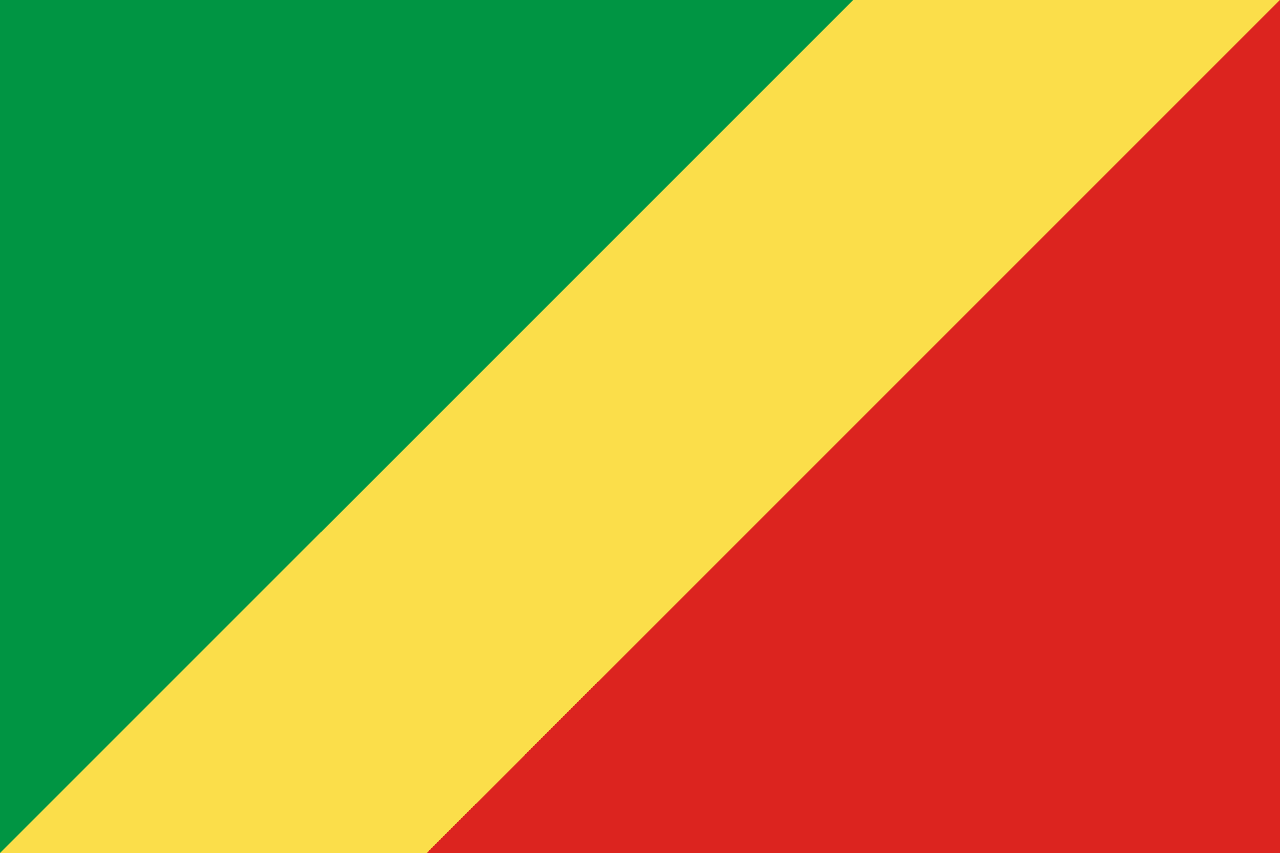
Symbolism
Green Triangle: Represents the dense tropical forests that cover most of the Republic of the Congo, symbolizing the country's rich natural heritage, abundant wildlife, and the forest resources that sustain many rural communities.
Yellow Diagonal Stripe: Represents the friendship and nobility of the Congolese people, symbolizing the mineral wealth of the country, the golden future ahead, and the generous spirit of hospitality that characterizes Congolese culture.
Red Triangle: Represents the struggle of the Congolese people for independence from French colonial rule, symbolizing the blood shed by those who fought for freedom and the determination to maintain sovereignty and national dignity.
History
- Pre-1880s: The region was inhabited by various Bantu peoples including the Kongo, Teke, and Mbochi, with the powerful Kingdom of Kongo controlling much of the area and engaging in trade across Central Africa.
- 1880s-1960: French explorer Pierre Savorgnan de Brazza established French colonial control, creating French Congo (later Middle Congo) as part of French Equatorial Africa, with colonial exploitation of natural resources and people.
- August 15, 1960: The Republic of the Congo gained independence from France with Fulbert Youlou as the first president, initially adopting a flag with Pan-African colors in horizontal stripes.
- 1960-1969: Political instability led to several coups and changes of government, with the flag representing the struggle to establish stable democratic institutions in the newly independent nation.
- 1969-1991: The People's Republic of the Congo was established as a Marxist-Leninist state under Marien Ngouabi, adopting a red flag with hammer, hoe, and star, aligning with Soviet and Chinese communist models.
- June 10, 1991: Following democratization and the end of the Cold War, Congo readopted the original independence flag with green, yellow, and red in diagonal arrangement, representing the return to multi-party democracy.
- 1997-1999: Civil war erupted between government forces and rebels, with the flag representing hopes for peace and national reconciliation in a country torn by ethnic and political conflicts.
- 1999-Present: Peace was restored under President Denis Sassou Nguesso, with the flag representing efforts to rebuild the country and develop its significant oil resources while maintaining stability in Central Africa.
Trivia
- The Republic of the Congo is often called Congo-Brazzaville to distinguish it from its much larger neighbor, the Democratic Republic of the Congo (Congo-Kinshasa).
- The flag represents a country that is over 60% covered by tropical rainforest, making it one of the most forested countries in the world and a crucial part of the Congo Basin ecosystem.
- Brazzaville, the capital, sits directly across the Congo River from Kinshasa (capital of DRC), making them the two closest capital cities in the world.
- The country has significant oil reserves that have transformed its economy, making it one of Africa's major oil producers alongside Nigeria and Angola.
- Congo is home to endangered species including forest elephants, gorillas, and chimpanzees in its national parks and protected forest areas.
- The flag flies over a country where French is the official language, but over 60 local languages are spoken, reflecting the diverse ethnic composition.
- Pool Malebo (Stanley Pool) is a large lake-like widening of the Congo River that separates Brazzaville from Kinshasa and serves as a major fishing area.
- The country has a relatively small population of about 5.5 million people despite its significant size, reflecting the dominance of forest over inhabitable land.
- Congo's economy depends heavily on oil exports, making it vulnerable to global oil price fluctuations but also providing revenue for development projects.
- The flag represents a country with rich musical traditions, particularly in genres like soukous and rumba that have influenced music across Africa.
- Traditional Congolese art includes sophisticated wood carving, masks, and sculptures that are prized by collectors worldwide for their artistic quality.
- The country has struggled with political instability since independence, experiencing multiple coups and civil conflicts that have hindered development.
- Congo is a member of the Economic and Monetary Union of Central Africa (CEMAC), using the Central African CFA franc as its currency.
- The Sangha Trinational, shared with Cameroon and Central African Republic, is a UNESCO World Heritage Site protecting pristine rainforest and wildlife.
- Despite oil wealth, many Congolese still live in poverty, reflecting challenges in translating natural resource wealth into broad-based development and improved living standards.
Related Countries
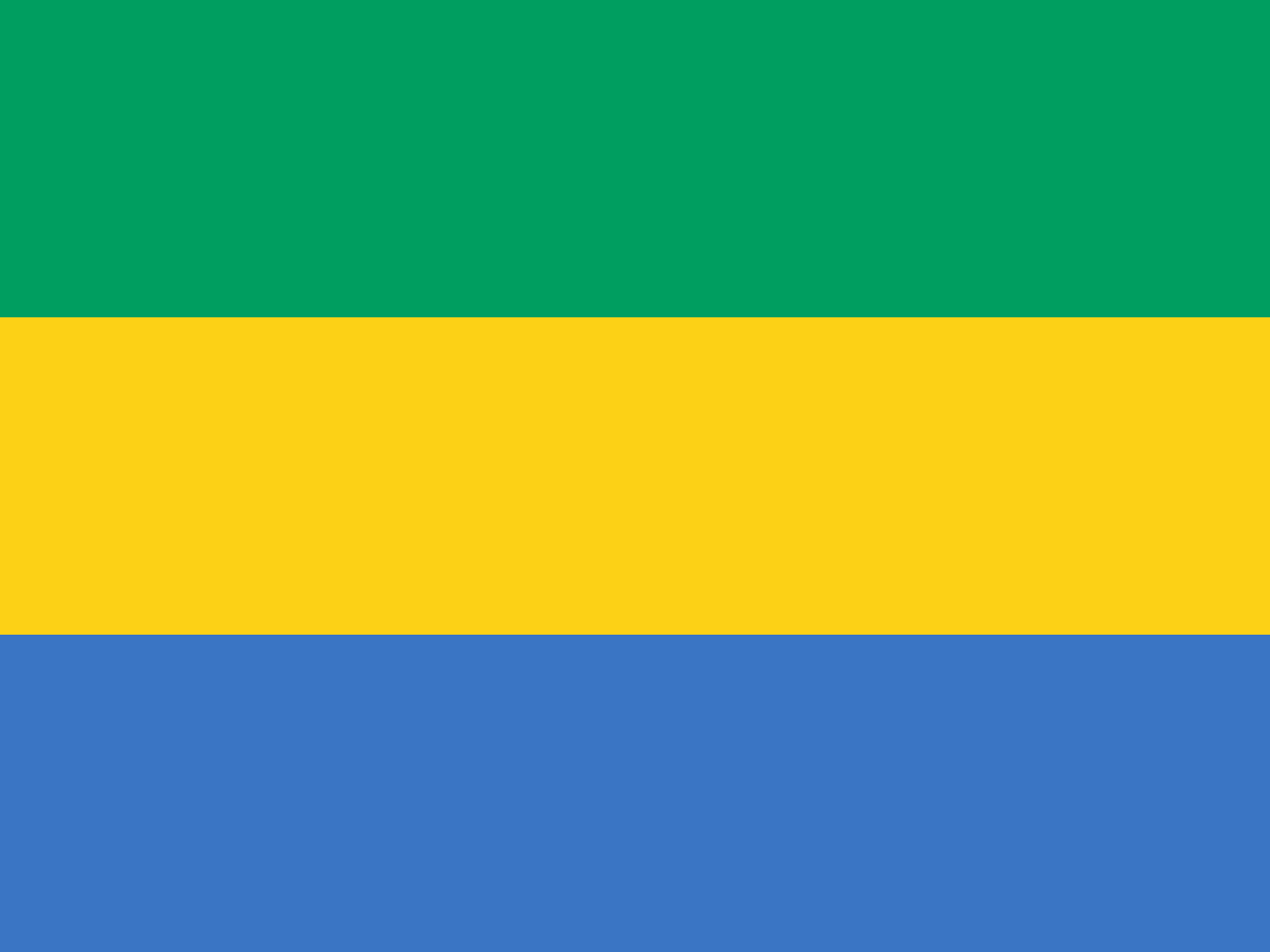
Gabon
Africa
Three horizontal stripes of green, yellow, and blue representing Gabon's equatorial forests, the equator itself, and the Atlantic Ocean, adopted upon independence from France.
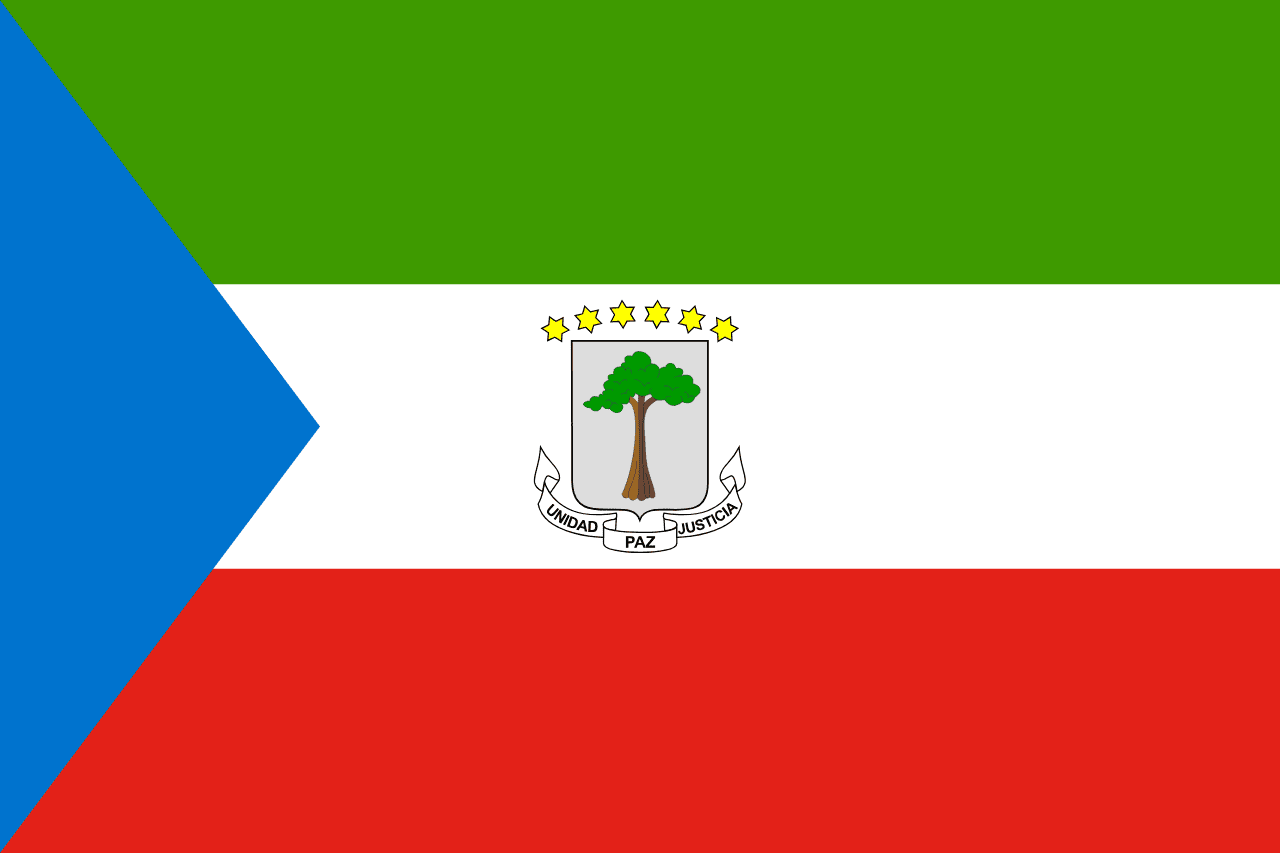
Equatorial Guinea
Africa
Three horizontal stripes of green, white, and red with a blue triangle at the hoist and the national coat of arms in the center, representing the country's forests, peace, independence struggle, and maritime heritage.
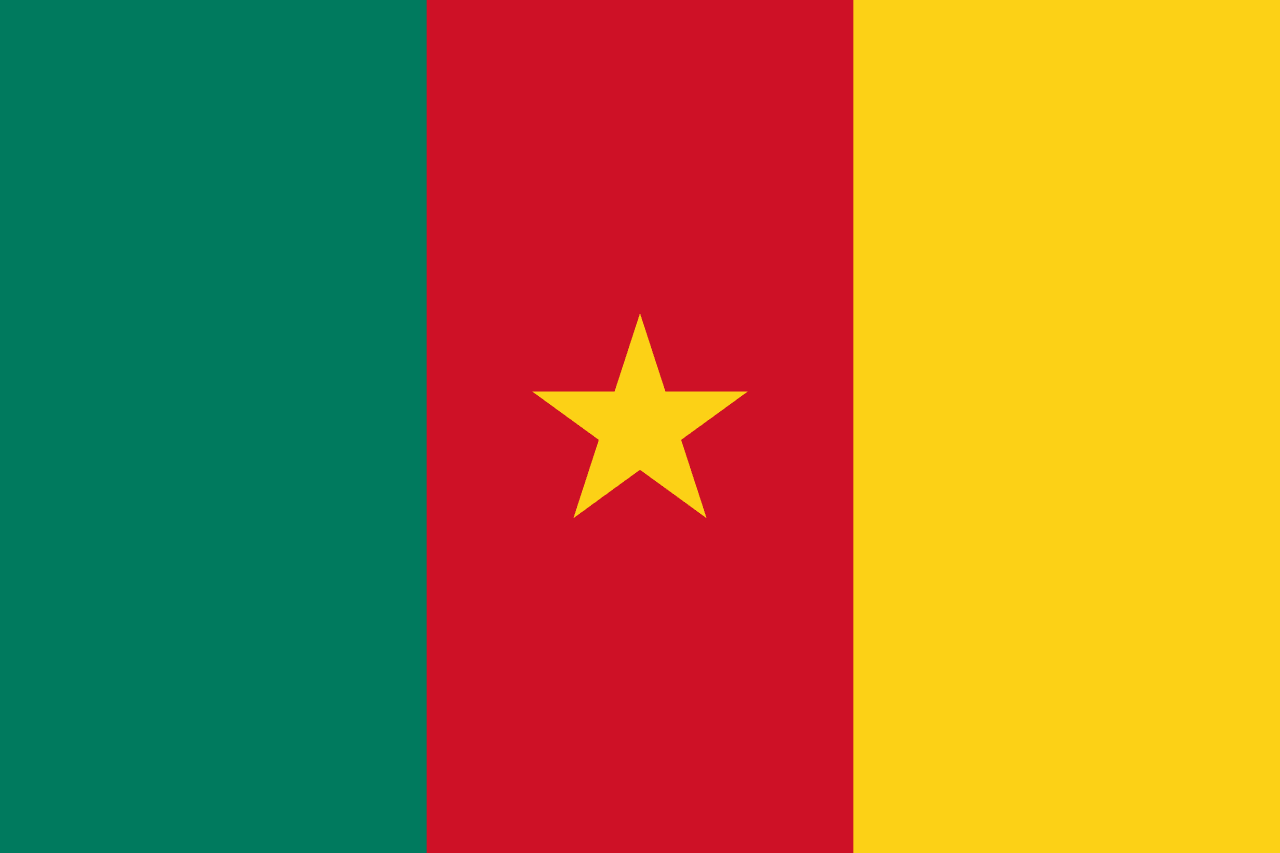
Cameroon
Africa
Three vertical stripes of green, red, and yellow with a yellow five-pointed star in the center of the red stripe, representing the forests, unity, the sun and savanna, and the unity of the diverse peoples of Cameroon.
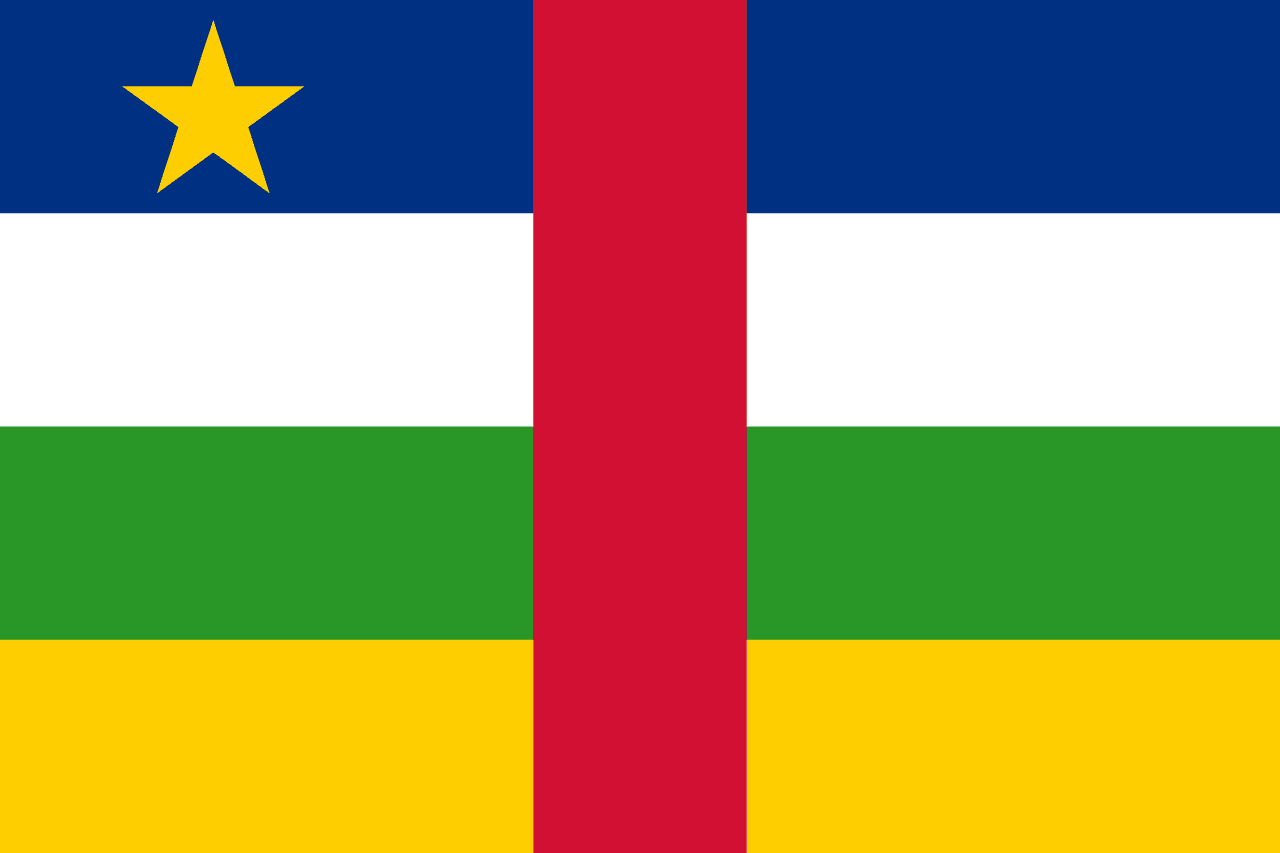
Central African Republic
Africa
Four horizontal stripes of blue, white, green, and yellow with a vertical red stripe through the center and a yellow five-pointed star in the upper hoist, combining Pan-African and French colors to represent unity and independence.
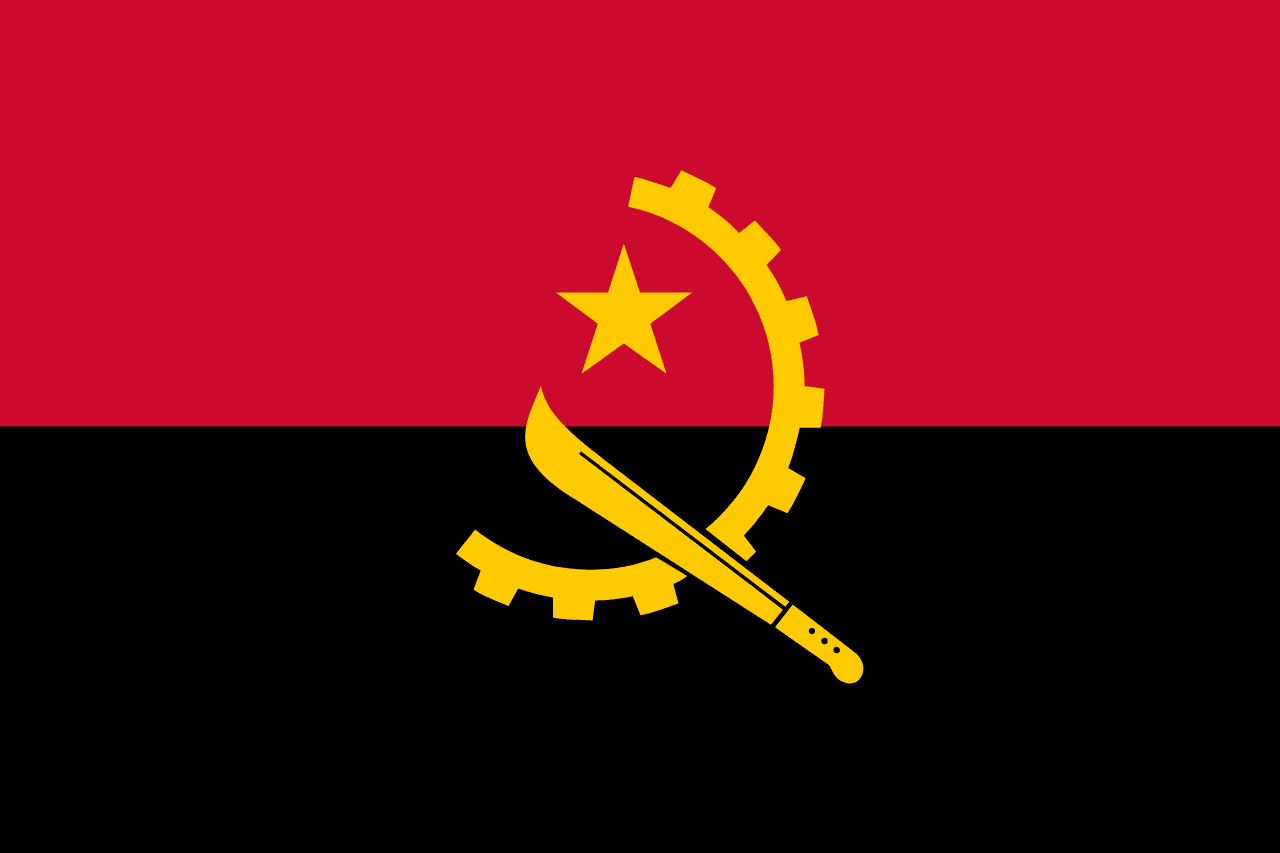
Angola
Africa
Two horizontal stripes of red and black with a yellow emblem in the center featuring a machete, star, and half gear wheel, representing the blood shed for independence, the African heritage, and the tools of liberation - agricultural work, socialism, and industrial progress.
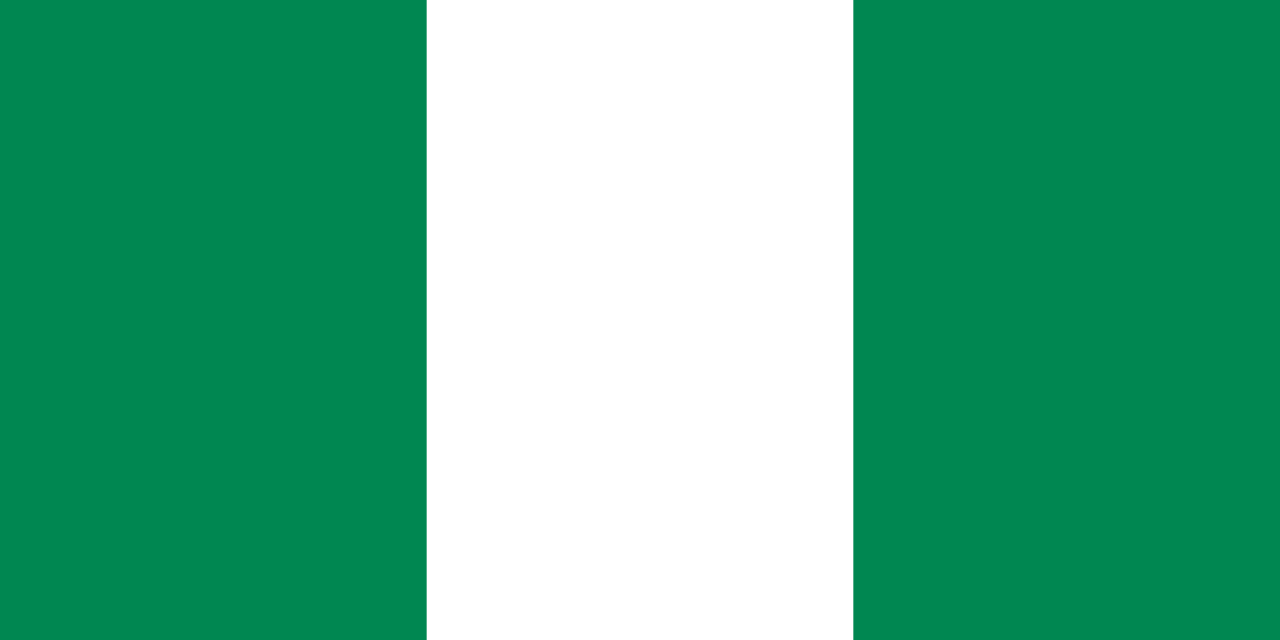
Nigeria
Africa
A vertical tricolor of green, white, and green. The flag was adopted at independence in 1960 and represents agriculture, unity, and peace.